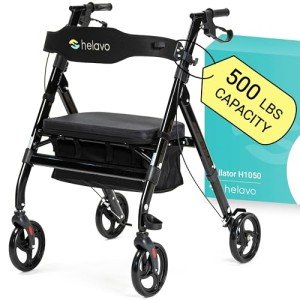Understanding Mobility Aids: Enhancing Independence and Quality of Life
Mobility help play an essential role in supporting individuals with minimal mobility, allowing them to carry out day-to-day activities with greater ease and enhancing their quality of life. These gadgets range from simple tools to more intricate devices, each designed to fit specific requirements and offer assistance in numerous contexts. This blog post will explore the types of mobility help readily available, their benefits, and vital factors to consider for choice.
What Are Mobility Aids?
Mobility help are devices designed to assist individuals in moving better and securely, whether in their homes, communities, or healthcare settings. Best Rollator Walker assist reduce the threat of falls, promote independence, and enhance the total lifestyle for those with mobility obstacles due to age, disability, or temporary injuries.
Typical Types of Mobility Aids
The range of mobility help readily available can be overwhelming. Below is an in-depth table that describes the most common types, their features, and normal use cases.
| Type of Mobility Aid | Description | Normal Use Cases |
|---|---|---|
| Wheelchairs | Wheeled gadgets for individuals not able to stroll; can be manual or electric. | Long-lasting specials needs, post-surgical healing |
| Walkers | Frame-like gadgets that offer support while walking; often consists of wheels for simpler movement. | Older grownups, those recovering from surgery |
| Walking sticks | Single-point or multi-point rods utilized for balance and support. | Mild to moderate mobility issues, instability |
| Crutches | Smartly developed support for people with leg injuries. | Temporary injuries, recovery from surgical treatment |
| Scooters | Motorized mobility aids for outdoor use or long distances. | Persistent conditions that restrict walking capacity |
| Raise Chairs | Recliner chairs that can elevate users for simpler standing. | Restricted strength or balance, elderly individuals |
| Home Modifications | Structural changes such as ramps and get bars to improve gain access to. | Various levels of mobility impairment |
The Benefits of Mobility Aids
Mobility aids offer many benefits to users:
- Enhanced Independence: Users can move more easily, lowering their reliance on caregivers.
- Increased Safety: Aids like walkers and canes assist maintain balance and reduce fall threats, which is particularly crucial for elderly users.
- Improved Quality of Life: With greater mobility, users can engage more fully in social, leisure, and personal activities.
- Increased Accessibility: Mobility aids can help users navigate their homes and neighborhoods better, resulting in enhanced access to important services.
- Pain Relief: By offering support while walking or standing, mobility aids can alleviate some pain associated with conditions like arthritis.
Considerations for Choosing the Right Mobility Aid
Choosing the suitable mobility aid typically requires mindful factor to consider. Here are some essential elements to keep in mind:
- Level of Mobility: Different help deal with different levels of mobility. Assess the person's strength and balance to identify the most ideal alternative.
- Weight Capacity: Ensure the chosen device supports the user's weight.
- User Environment: Consider where the mobility aid will be utilized, such as inside your home, outdoors, or in crowded spaces.
- Relieve of Use: The gadget ought to be easy to operate for the individual, considering their strength and mastery.
- Storage and Transportation: Consider how the mobility aid will be transferred, particularly if it is utilized outside the home.
- Expense and Insurance Coverage: Factor in the cost of the gadget and inspect if insurance can assist cover the expense.
Frequently Asked Questions (FAQ)
Q1: How do I understand which mobility aid is right for me?A1: Consultation with a doctor is recommended. They can evaluate your particular requirements and advise suitable help based upon your mobility level, health condition, and living environment.
Q2: Are mobility aids covered by insurance?A2: Many insurance strategies do cover mobility help, but protection differs considerably. Examine with your insurance service provider concerning specifics.
Q3: Can mobility aids be rented?A3: Yes, many medical supply companies provide rental alternatives for mobility help, which can be an affordable solution for momentary needs.
Q4: How can I ensure my mobility aid is preserved?A4: Regular upkeep is essential for safety and durability. Follow the maker's guidelines for maintenance and take it for periodic professional checks.
Q5: What adjustments can be made to homes for better mobility?A5: Ramps, grab bars, and non-slip floor covering are all essential modifications that can improve safety and accessibility for users of mobility aids.
Mobility help are indispensable tools that empower individuals with restricted mobility. By enhancing independence and promoting security, these help considerably improve the lifestyle for users. When picking a mobility aid, it is vital to think about individual needs, preferences, and environments to optimize advantages. Consulting a healthcare professional can assist navigate the choices readily available. As society continues to focus on accessibility, having actually informed conversations about mobility aids will make sure that people can lead fuller, more independent lives.
In the grand plan, mobility aids are not just physical gadgets; they are secrets to opening a world of possibilities and encourage active participation in life. From wheelchairs to canes, each aid uses distinct benefits developed to satisfy the diverse requirements of users, promoting a better, more inclusive community.

